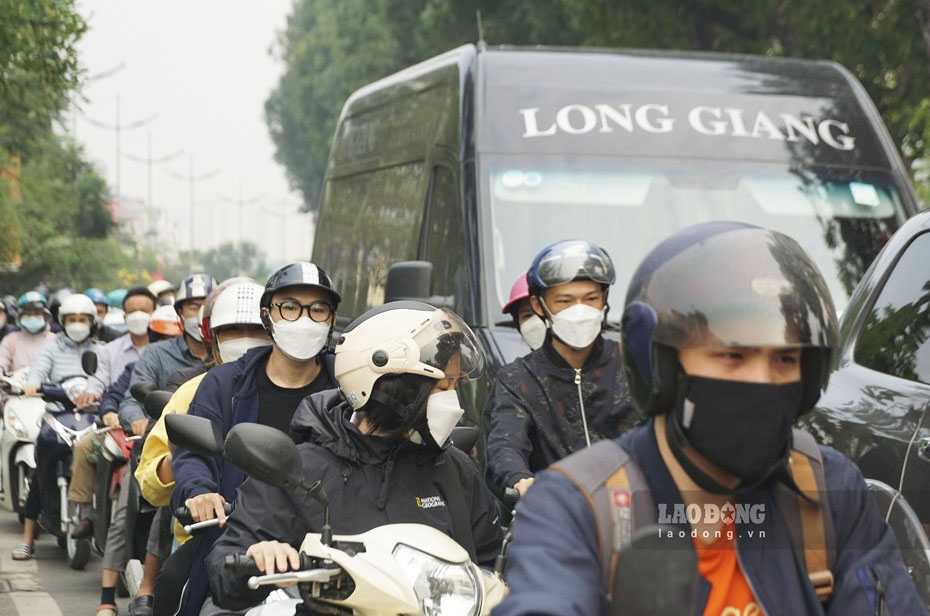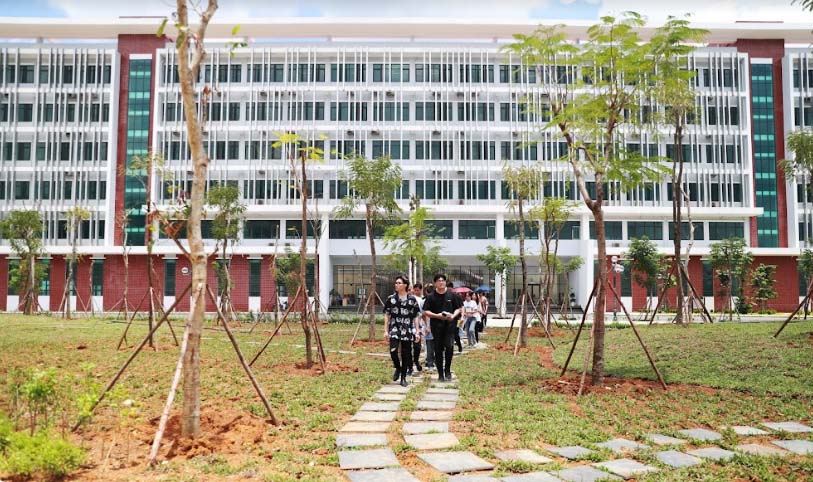Currently, the entire Hanoi city has about 50 public universities, of which 26 are in the inner city area alone. Most of these are located in central wards, which are considered "land packed with people".
Areas such as Cau Giay, Thanh Xuan, Hai Ba Trung, where many large universities such as the University of Law, University of Education, University of Science and Technology, University of Construction... have high construction density and are no longer able to expand.
Land for schools is limited, and the demand for training is expanding. According to statistics, many universities with an average area of less than 1m2/student.
The high level of student concentration leads to a very high demand for travel by both personal vehicles and public transport. Therefore, the image of traffic jams in areas with many universities is not uncommon.

Ms. Ha Anh (Hai Ba Trung ward) said that in the area where she lives alone, there are 3 large universities with tens of thousands of students. Within a radius of 5km around the school, the number of students is very high.
"It must also be admitted that thanks to the large number of students, business activities, shops, and services have developed. But there are too many people, often traffic jams, a lot of household waste, and polluted the environment," Ms. Ha Anh shared.
Hanoi currently has about more than 650,000 students, equal to about 40% of the total number of students in the Red River Delta provinces. Meanwhile, the inner-city land fund is increasingly narrowing due to pressure from population growth and infrastructure development.
The goal by 2030 is to relocate the regular training block of many universities out of the inner city, only retaining facilities as centers for international research, cooperation and postgraduate training with a scale of about 200,000 people.
Therefore, Hanoi also encourages schools with an area of less than 2 hectares to move outside the central area, specifically towards satellite cities such as Hoa Lac and Soc Son where land funds have been calculated.
In fact, Hanoi National University has pioneered in moving training blocks out of the inner city with a new "goal stop" of Hoa Lac. To date, Hanoi National University has had about 10,000 students studying at the new campus. It is expected that by 2030, this number will increase to 60,00080,000 students.

According to Mr. Dao Ngoc Nghiem - Vice President of the Vietnam Urban Planning and Development Association, relocating universities out of the inner city of Hanoi is the right thing to do, gradually reducing the pressure on urban infrastructure in the central area.
"When moving students to new facilities, it will bring many other components such as restaurant services, entertainment... this will promote the development of new urban areas.
However, it is also necessary to select and focus on relocating some schools with suitable conditions first and focus on completing infrastructure in new places to create synchronization and convenience" - Mr. Dao Ngoc Nghiem said.
It is expected that by the end of this year, Hanoi will start construction of the Metro Van Cao - Hoa Lac urban railway line, creating a foundation for developing university urban areas and science and technology, with the core being Hoa Lac High-Tech Park, Hanoi National University and about 300 hectares of land for the university area to relocate universities from the inner city to this area.











